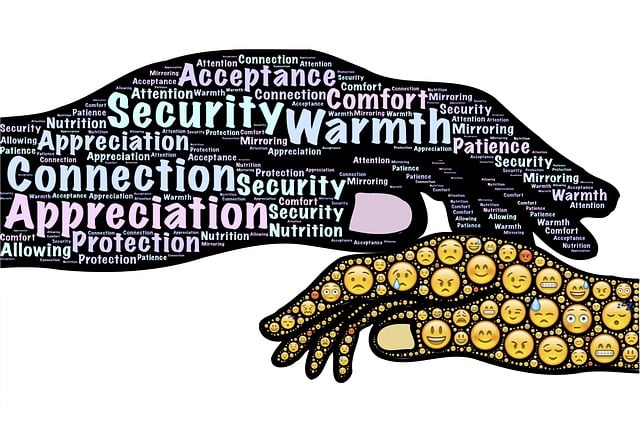Direct cremation provides a streamlined, cost-effective alternative to traditional funerals, offering a respectful and simplified end-of-life option. This process involves direct cremation services adhering to legal regulations while ensuring the deceased's wishes are honored. Families can choose to commemorate their loved ones in various ways, from private ceremonies to scattering ashes, reflecting personal preferences and beliefs. The focus is on celebrating life, with cremation services handling all necessary documentation, providing urns, and coordinating memorial services. This approach prioritizes dignity and personalization while offering significant cost savings compared to traditional funeral practices. Cremation services providers offer guidance and support throughout the process, ensuring families receive compassionate care during this difficult time. Understanding direct cremation options is key for informed end-of-life planning, with a range of after-cremation options available to tailor a meaningful farewell.
Direct cremation serves as a modern response to the traditional funeral process, offering a streamlined, cost-effective alternative for end-of-life arrangements. This article delves into the essence of direct cremation, outlining its steps, benefits, and considerations. From understanding what direct cremation entails to exploring how it can be personalized without overwhelming expense, readers will gain a comprehensive view of this option in cremation services. We’ll navigate through the process, from making initial decisions to finalizing plans, ensuring that you are well-informed and prepared when considering direct cremation as an end-of-life choice.
- Understanding Direct Cremation: A Guide to Simplified End-of-Life Choices
- The Process of Direct Caimation: From Decision to Ceremony
- Benefits of Direct Cremation: Affordability, Flexibility, and Personalization Options
- What to Expect When Opting for Direct Cremation Services
- Making Arrangements: Steps and Considerations for Direct Cremation Planning
Understanding Direct Cremation: A Guide to Simplified End-of-Life Choices

Direct cremation represents a straightforward and minimalistic approach to the end-of-life process, offering individuals a simplified alternative to traditional funeral services. This option is designed for those who prefer a no-fuss farewell and wish to minimize the emotional and financial burden on their loved ones after they pass. The process begins with the deceased being taken directly to the crematory, where the body is cremated in an intimate setting without a ceremonial preceding it. This approach eliminates the need for viewing or visitation services, which are common in traditional funerals, allowing for a more private and cost-effective choice. Choosing direct cremation means that families can commemorate their loved ones in a manner that aligns with their preferences and beliefs, whether that involves a simple memorial gathering, scattering ashes in a meaningful location, or something entirely different. Cremation services providing this option understand the significance of this decision and are equipped to handle the process with respect, care, and professionalism, ensuring that the deceased’s wishes are honored and that families receive the guidance they need during this sensitive time. The cremation process itself is carried out in accordance with state and local regulations, offering peace of mind regarding legal and ethical standards. With direct cremation, the focus shifts to celebrating a life lived, rather than the event of passing, allowing for a more personalized tribute that reflects the individual’s character and legacy.
The Process of Direct Caimation: From Decision to Ceremony

Direct cremation represents a simple and cost-effective alternative to traditional funeral services, focusing on the cremation process without an elaborate ceremony beforehand. When an individual or their family decides on direct cremation, it signifies a straightforward choice that foregoes embalming, public visitations, and religious or ceremonial rituals. The deceased is transported to a crematory where the legal requirements for identification and consent are meticulously followed. The body is then placed in a cremation chamber, also known as a crematorium, where the cremation process begins with the application of intense heat, reducing the body to its basic elements. This process is carried out with respect and dignity, ensuring that all legal and ethical standards are upheld throughout.
Following the cremation, the remaining ashes are carefully collected and placed in an urn, which can then be returned to the family. The entire direct cremation process from decision to ceremony typically takes place within a short timeframe, often within days, offering a swift and private resolution during a difficult period. Cremation services facilitating this option provide clear guidance throughout, ensuring that all legal requirements are met while offering a compassionate and supportive approach to the end-of-life choices of the family. These services often include the handling of necessary paperwork, the provision of an urn for the ashes, and the organization of a memorial ceremony at a later date if desired by the family. This allows for a personalized remembrance that can be held in a meaningful location, offering closure and a way to honor the life of the deceased in a manner that is both introspective and commemorative.
Benefits of Direct Cremation: Affordability, Flexibility, and Personalization Options

Direct cremation stands as a modern and cost-effective alternative to traditional burial practices, offering a streamlined approach to the end-of-life process. This form of cremation service prioritizes affordability by eliminating ceremonial costs, such as funeral home rental, casket expenses, and embalming fees. It provides families with significant financial relief, allowing them to honor their loved ones in a manner that is more budget-conscious without compromising on dignity or respect. Furthermore, direct cremation offers unparalleled flexibility in terms of memorialization. After the cremation process, the remains are returned to the family, granting them the autonomy to plan a personalized service at a time and place significant to their loved one’s memory. This could range from a simple gathering in a park to a more traditional ceremony, with the added benefit of choosing a meaningful location that truly reflects the deceased’s personality or preferences. The cremation options available are diverse, catering to the individual needs and desires of each family, ensuring that the remembrance is as unique as the life being celebrated.
What to Expect When Opting for Direct Cremation Services

When contemplating the end-of-life arrangements, understanding what direct cremation entails is crucial for those seeking a simpler and more cost-effective alternative to traditional funeral services. Direct cremation, often referred to as immediate or simple cremation, involves the process of cremating the deceased with minimal ritual or ceremony and without embalming. This option eliminates the need for a viewing or visitation, reducing the overall costs and complexity associated with traditional funerals.
Upon opting for direct cremation services, families can expect the process to begin promptly after the necessary authorizations are obtained. The deceased is then transported to a crematory where the body is cremated and the ashes are carefully processed and prepared for return to the family. Typically, the ashes are returned within a few days in an urn, along with all necessary documentation required by law. Families have the flexibility to hold a memorial service at a later date, either with or without the presence of the cremated remains, allowing for a personalized tribute that aligns with the deceased’s wishes or the family’s needs. Additionally, direct cremation services often include a basic container for the cremated remains, and some providers may offer additional services such as memorial plaques, urns, and assistance with end-of-life planning. It is important to discuss these options with a reputable cremation service provider to fully understand what is included and to ensure that the arrangements meet both your expectations and those of your loved ones.
Making Arrangements: Steps and Considerations for Direct Cremation Planning

When contemplating cremation as a final disposition option for a loved one, direct cremation emerges as a straightforward and cost-effective alternative to traditional burial or more elaborate cremation services. Direct cremation involves the immediate cremation of the deceased without embalming, a formal ceremony, or an interment service. The process begins with contacting a crematory or funeral home that offers direct cremation services. This initial step requires the family to provide necessary information about the deceased and make decisions regarding the cremation itself, as well as the handling of the remains.
Upon choosing a provider, families should discuss the options available for memorializing the deceased post-cremation. Decisions on the final resting place, such as a niche in a columbarium or the scattering of ashes in a meaningful location, need to be made. Additionally, families should consider any legal requirements, such as obtaining a death certificate and authorization for cremation. It’s crucial to understand the provider’s policies on the return of remains and the documentation they will furnish. The planning process also involves setting up a payment structure, which may include a single flat fee or options for financing. Throughout this process, it is advisable to ask questions and ensure clarity on all aspects of the direct cremation services to avoid any surprises later on. Cremation service providers are equipped to guide families through these steps, offering support and transparency to facilitate a respectful and dignified farewell.
Direct cremation offers a straightforward and dignified end-of-life option that aligns with modern preferences for simplicity and affordability. This article has delineated the process, benefits, and considerations involved in selecting direct cremation as an alternative to traditional funeral services. For those seeking a cost-effective and personalized farewell, direct cremation services stand out as a viable choice. It is a respectful and efficient method that prioritizes the wishes of the deceased and their loved ones. As the demand for non-traditional end-of-life arrangements grows, understanding cremation services becomes increasingly important. This guide serves as a helpful resource for anyone considering this option, ensuring that decisions are made with clarity and care.
